Violet syrup made with wild violets is a delicious and stunningly beautiful spring recipe. Wild violets bring their early spring magic to this simple recipe, and the real magic happens when this violet syrup changes color with lemon juice!
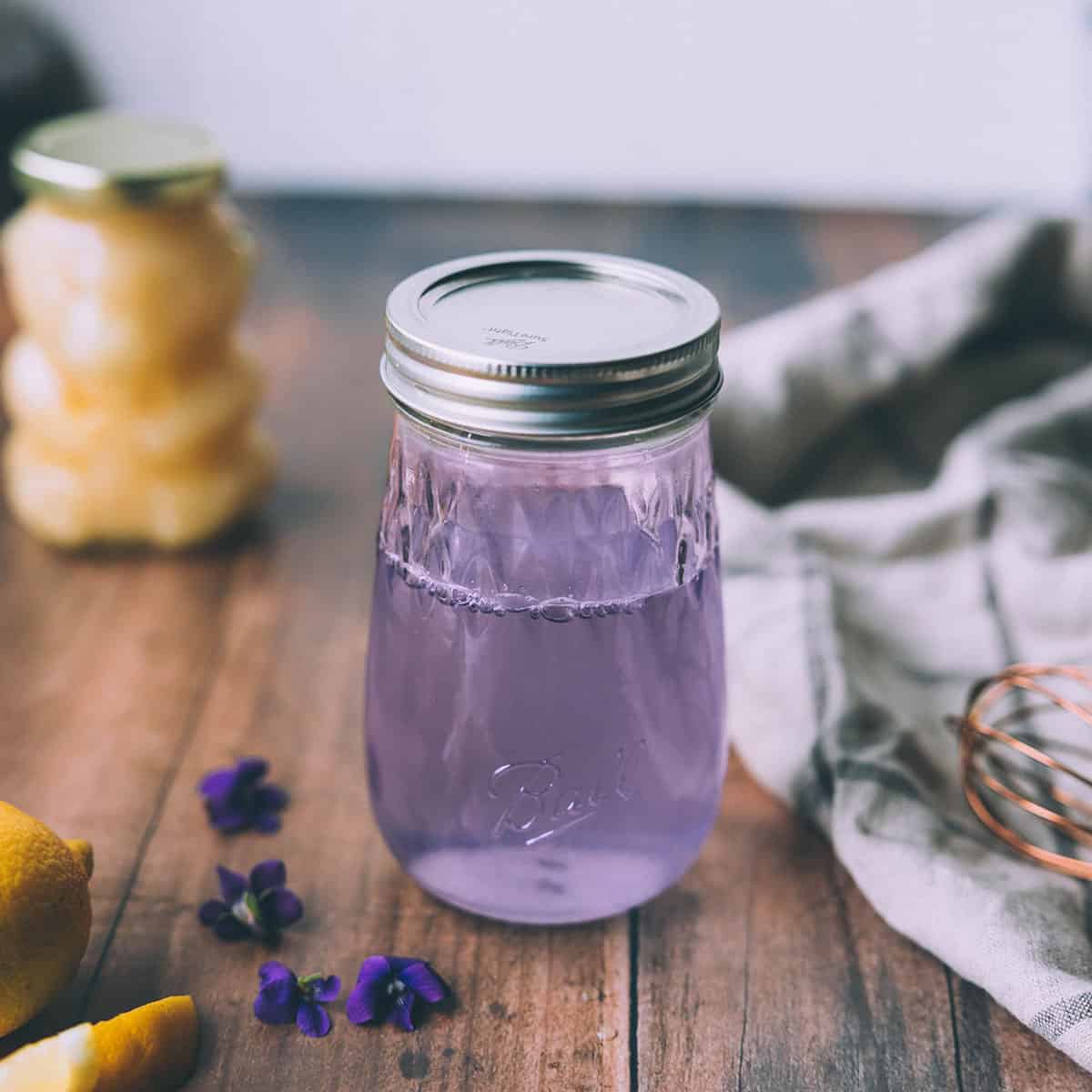
Want to save this post for later?
About Wild Violets
In mythology, violet flowers are known as flowers of change and transition. They represent transformation and the cycle of life and rebirth.
As an early spring flower, I find this very fitting. Wild violets are one of the first flowers that pop up, signifying the transition from winter to spring. There is no better sight after a long winter than these dark purple beauties showing their faces when we are all ready for change!
Wild violets bloom anywhere from February to May, depending on the region and weather. Also called native violets, wild violets are edible and have medicinal properties. They have a lovely scent that is welcoming as spring tiptoes in.
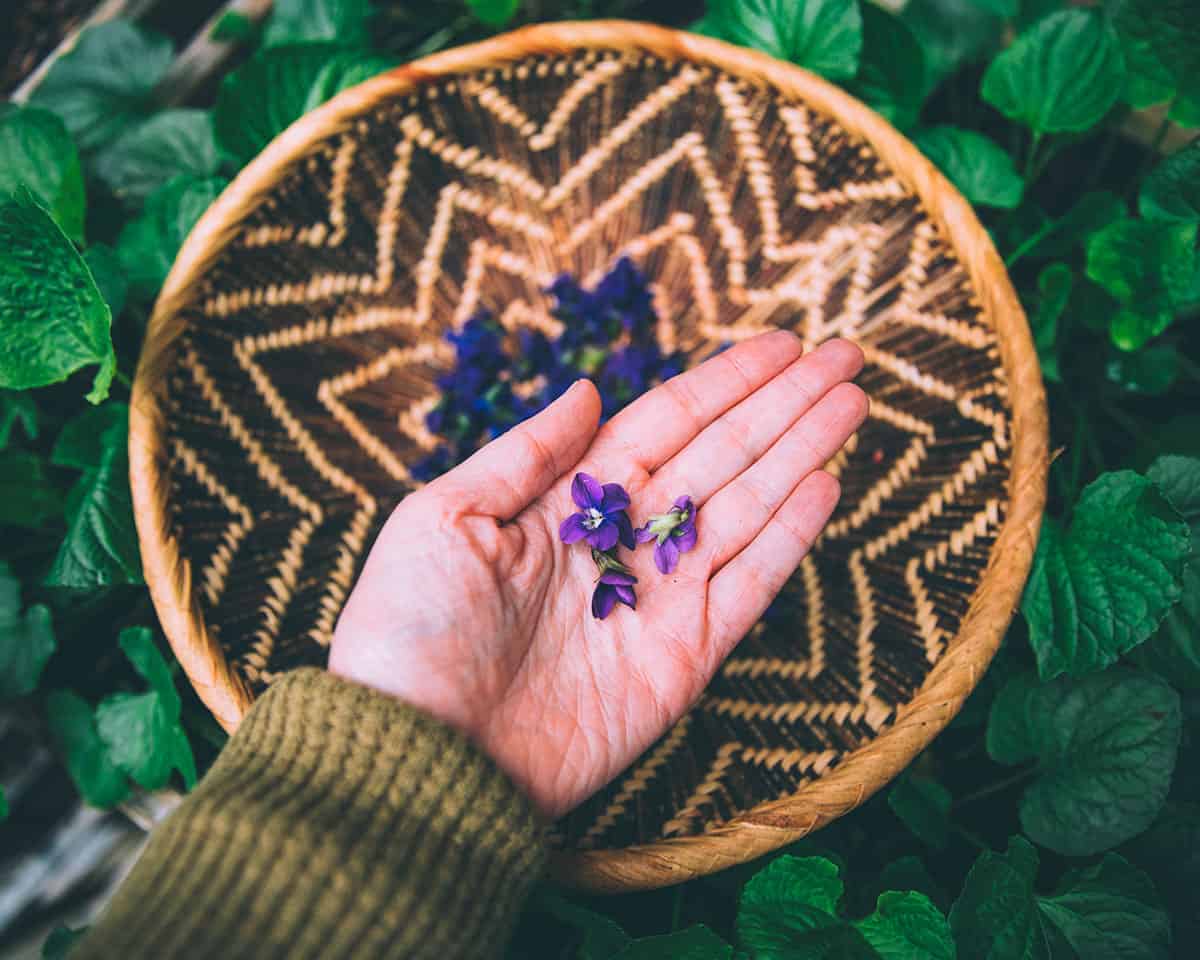
You’ll want to get out and forage wild violets to make this violet syrup with some amount of haste, as they don’t stick around forever. Their sweet spot is just as things warm up, but once it’s too warm their blooms will disappear.
Wild violets and their leaves have healing and medicinal uses, but today we will focus on their beauty and delicious taste in celebration of the transition from winter to spring!
Related: Wild Violet Soap for Spring
Get recipes using wild violet, lilac, forsythia, chive, calendula, lavender, white clover, nasturtium, elderflower, yarrow, rose, and Queen Anne’s lace flowers in my ebook Edible Flower Recipes: Infusions, Syrups, Jellies, Beverages, & Snacks!
How to Make Wild Violet Syrup
This wild violet syrup is as tasty as it is pretty, with a floral and lightly sweet taste. For a more sweet or less sweet syrup, adjust the honey to taste.
The most magical part of violet syrup is its ability to change color!
Just as wild violets sweetly bring in the change and transition of winter to spring, this syrup will change in color from hues of blue to turquoise to purple and light purple, all the way to magenta and pink. Just add lemon juice!
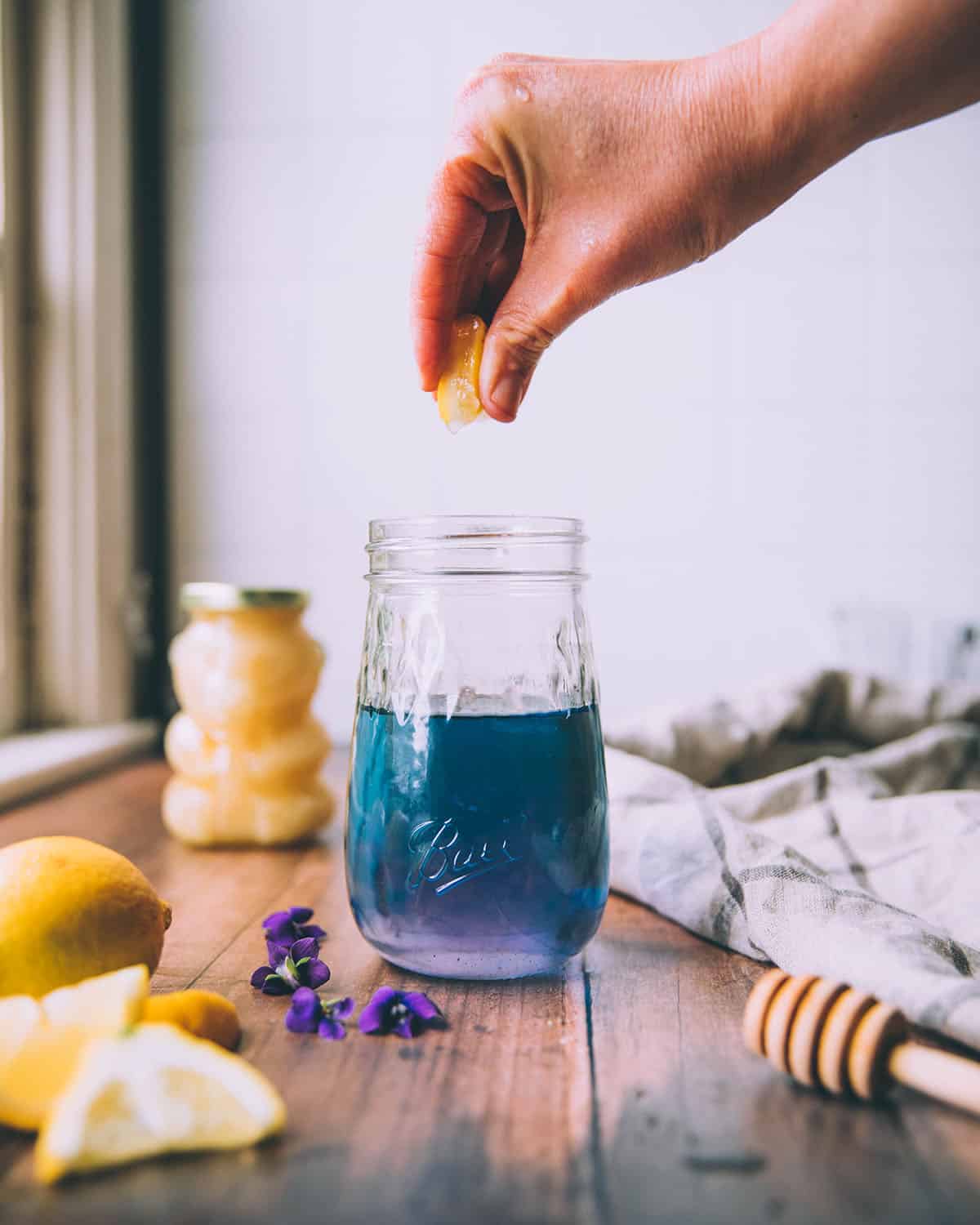
Ingredients for Violet Syrup
Wild violet flowers that are freshly foraged. Violet flowers can also be frozen until ready to use if you don’t have enough at one time to make the recipe.
Lemon juice to adjust the color of the syrup. Freshly squeezed works best, and the amount depends on what color is preferred. Have fun with this magic transformation!
Light honey sweetens the violet syrup. Dark honey will impact the color of the violet syrup a bit more so a lighter variety is better here if the color of the finished syrup is important to you. Sugar can also be used, but I prefer honey for its benefits.
Make the Violet Syrup
Once you have about a cup of wild violets foraged put them into a pint jar.
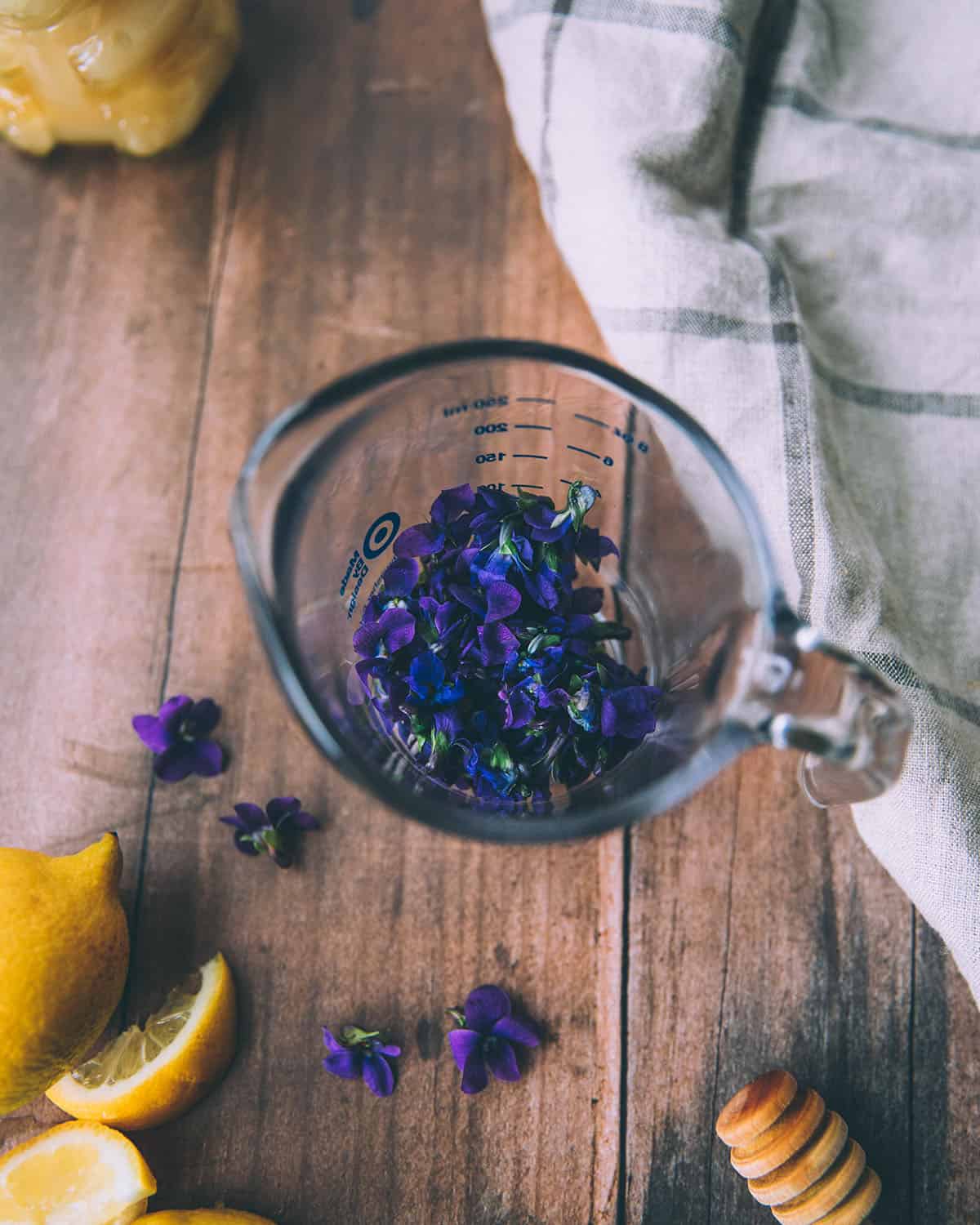
Bring water to a boil in a small saucepan, then turn off the heat and let it cool down for a few minutes so the boil comes to a stop.
Pour the hot water over the violet flowers. Let them steep for 30 minutes to an hour, and watch the beautiful color seep into the water.
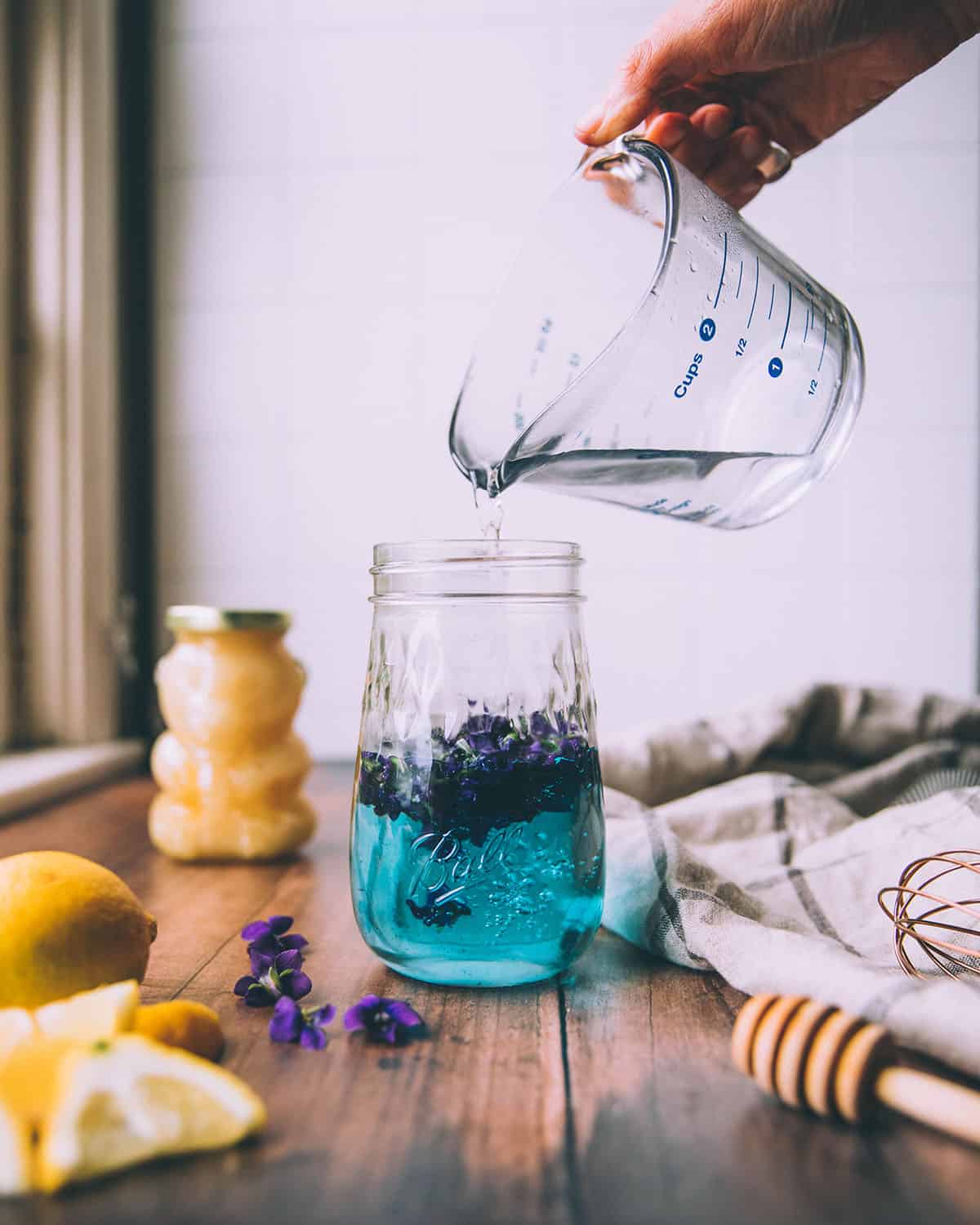
The violet flower tea will turn a lovely shade of blue or dark purple as it steeps.
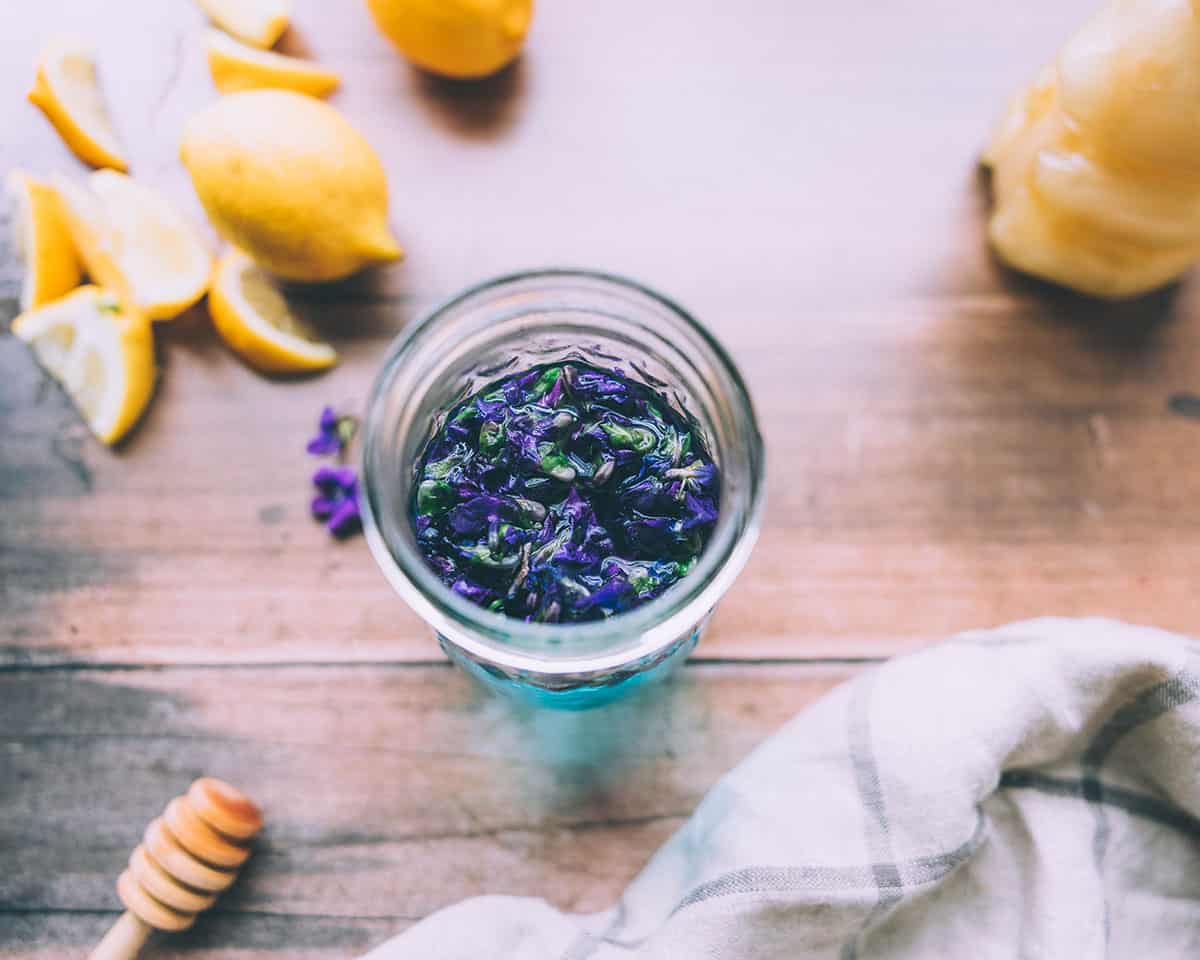
When the violet flower tea has finished steeping, strain the flowers out of the liquid with a mesh strainer, or whatever you have on hand.
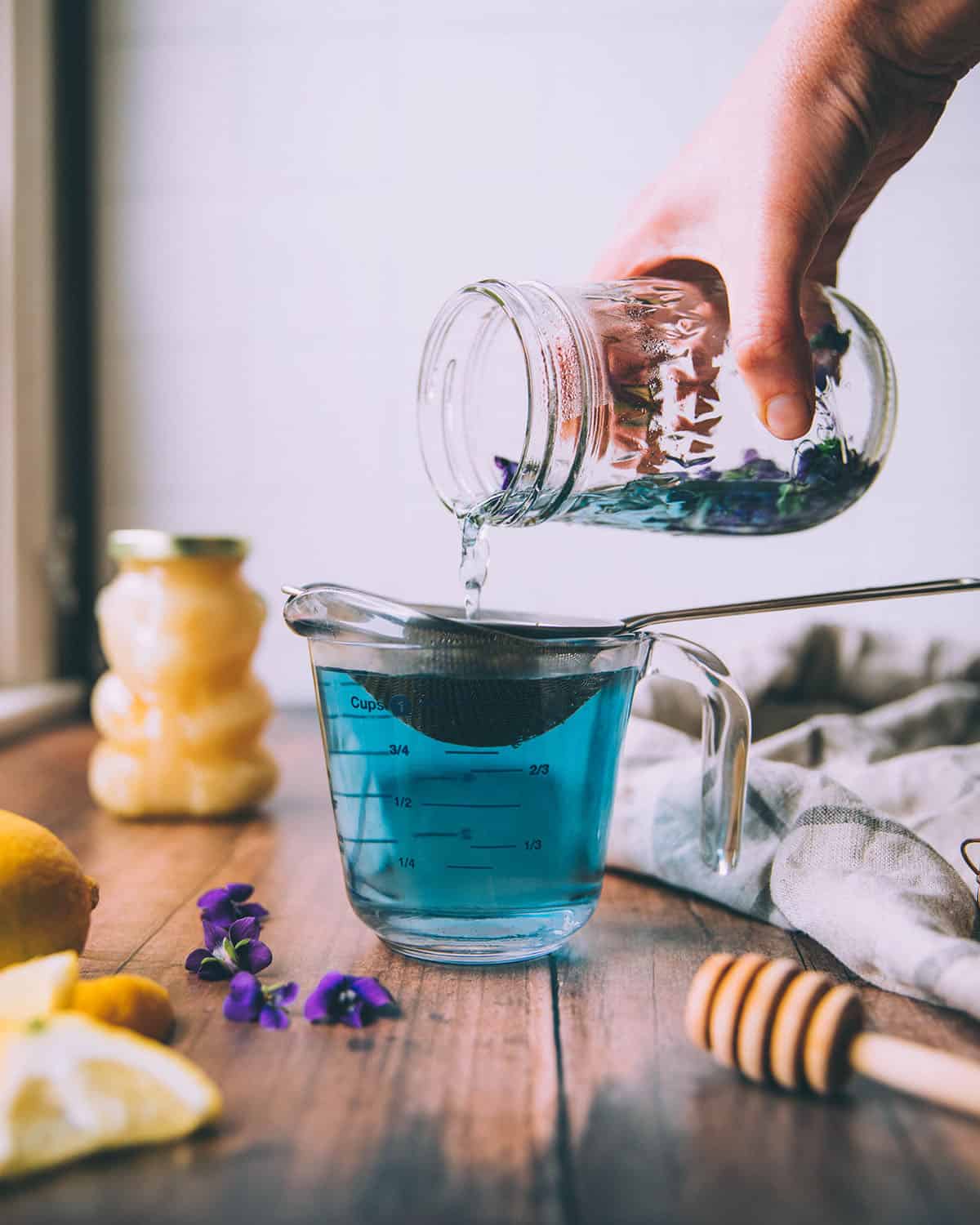
After straining, add lemon juice to make it a lighter violet color if desired. More lemon juice will turn it lighter until it ultimately turns pink. I like mine a light violet shade, so I left it there!
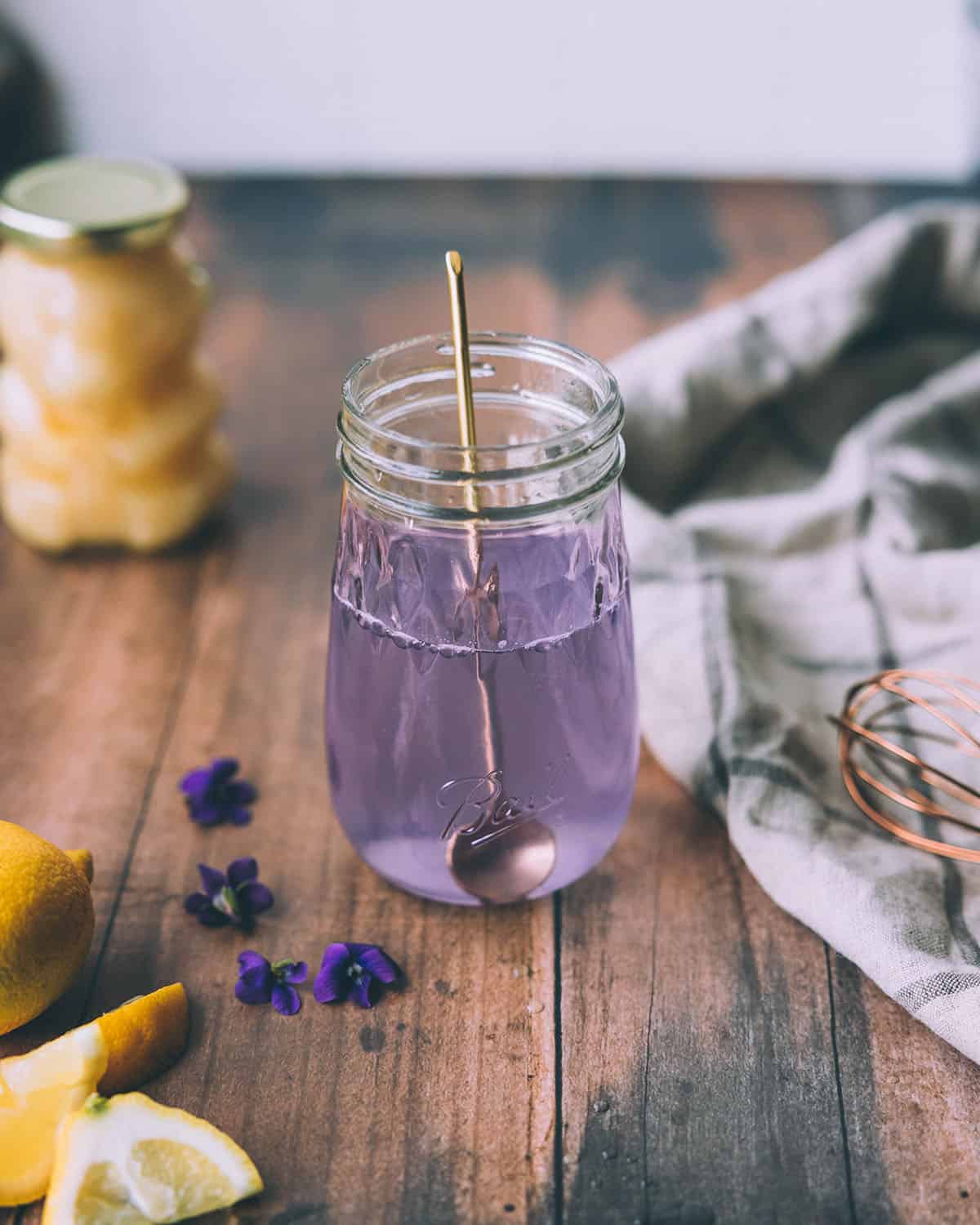
Stir the honey into the wild violet tea. It can be warmed up a little if needed for it to fully dissolve the honey.
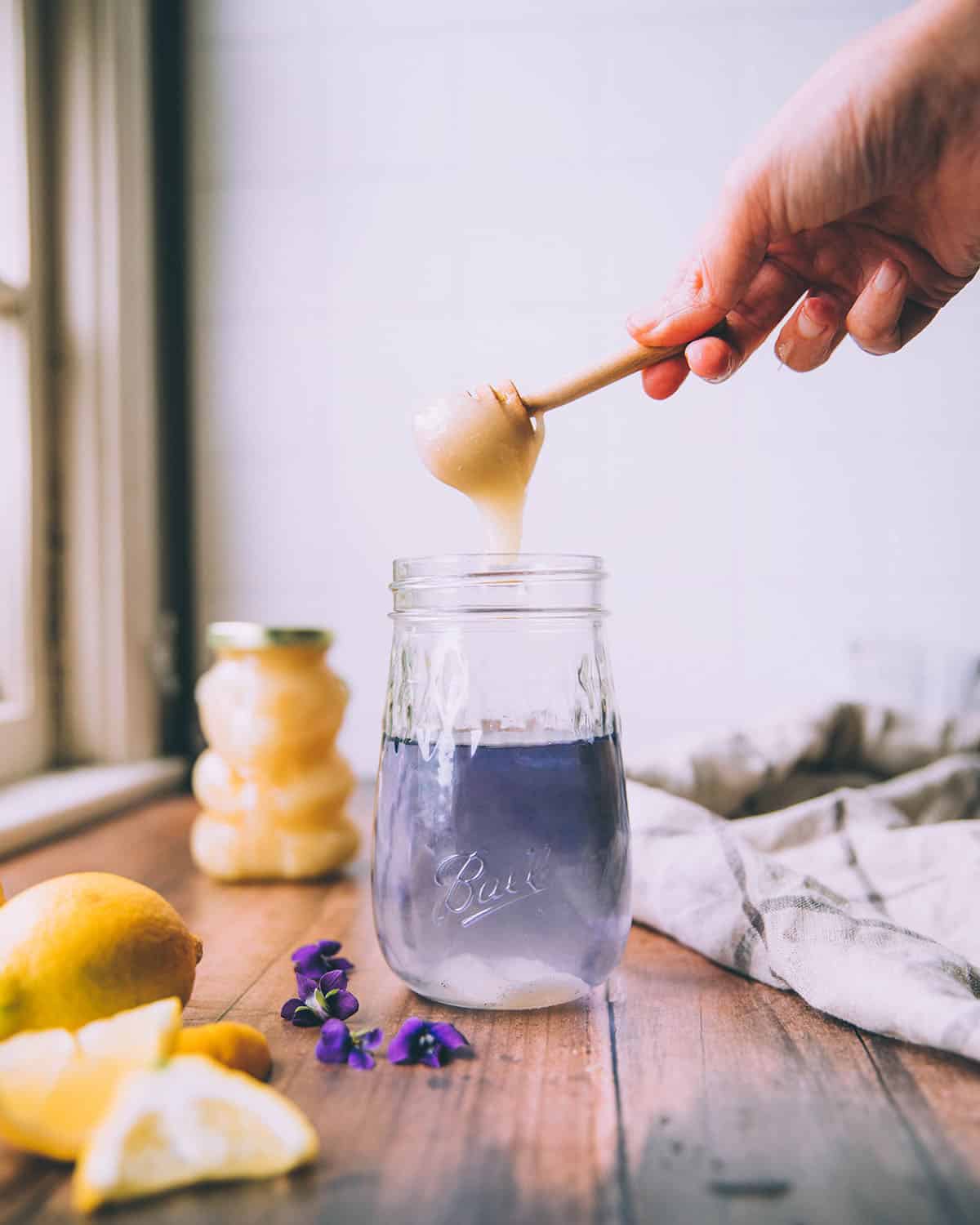
Violet Syrup Uses
Use this violet syrup to sweeten and add flavor to teas. It also makes a pretty addition to cocktails or lemonade with a light floral flavor!
Drizzle on cakes, pancakes, or yogurt for a fresh spring look and delicious taste. Violet syrup can make magical popsicles too! Get creative, this recipe is a warm magical spring transition!
Store violet syrup in the refrigerator, it will last for a few days up to a month.
More Spring Flower Recipes:
- Wild Violet Infused Vinegar
- Forsythia Flower Honey Syrup
- Lilac Flower Infused Honey
- Low-Sugar Lilac Jelly
- Lilac Mead
More Herbal Syrup Recipes
- Thyme Cough Syrup
- Dandelion Syrup
- Rose Hip Syrup
- Pine Needle Cough Syrup
- Forsythia Syrup
- Elderberry Syrup
- Lilac Syrup
- Rhubarb Syrup
Wild Violet Syrup
Ingredients
- 1 cup wild violet flowers
- 1 ½ cup water
- fresh lemon juice to adjust color of syrup
- ½ cup light honey
Instructions
- Put the wild violet flowers in a pint jar.
- Bring the water to a boil, then turn off the heat and let it sit for several minutes to cool.
- Pour the hot water over the violet flowers and let them steep for 30-60 minutes.
- Strain the violet flowers out of the liquid.
- The violet flower tea will be blue or dark purple. Add a squeeze of lemon juice if you wish to make it a lighter violet color. More lemon juice will turn it pink.
- Stir in the honey. The violet tea can be warmed slightly if needed to fully dissolve the honey.
Notes
- Dark honey will change the color of the syrup.
- If more lemon juice is added, the violet syrup will turn from light purple to pink.

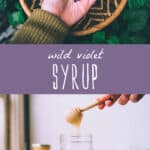
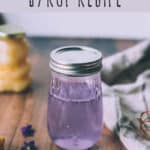
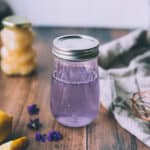

I just made the tea and it tastes more grassy, less flowery. It is a beautiful blue, though. Did I do something wrong?
Hi Joanne. It’s really hard to say because the flavor is subjective. Maybe your flowers were more mature?
Did you removed the petals from the green bud?
Yes.
My son has EOE and has a lot of throat and lung problems. I make wild violet syrup. We put it in everything. Makes taking medicine so easy. I wonder, though, can it be frozen for year round enjoyment?
Hi Faith. Yes, it should freeze well.
Is lemon juice required? I like the dark color ☺️
Not required, but it does brighten the flavor!
Should leave the syrup in fridge and use when needed how long can i keep it in fridge
Yes, that’s correct. I refrigerate it and use it within a week or two.
wild spring Violets are my absolute favorite flower. I just cant help but smile when I see them :)
last year I made violet syrup but didnt have any lemons on me so I used some oranges instead. It tasted wonderful! Like an orange blossom syrup. I even gave some to my friend and they loved it in teas and lemonade.
Yum! Sounds delightful, Anna!